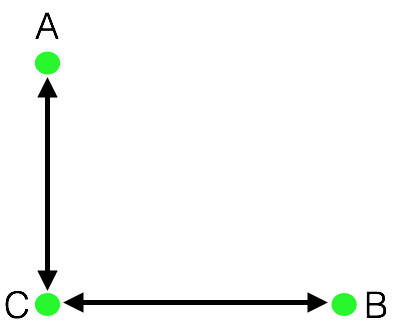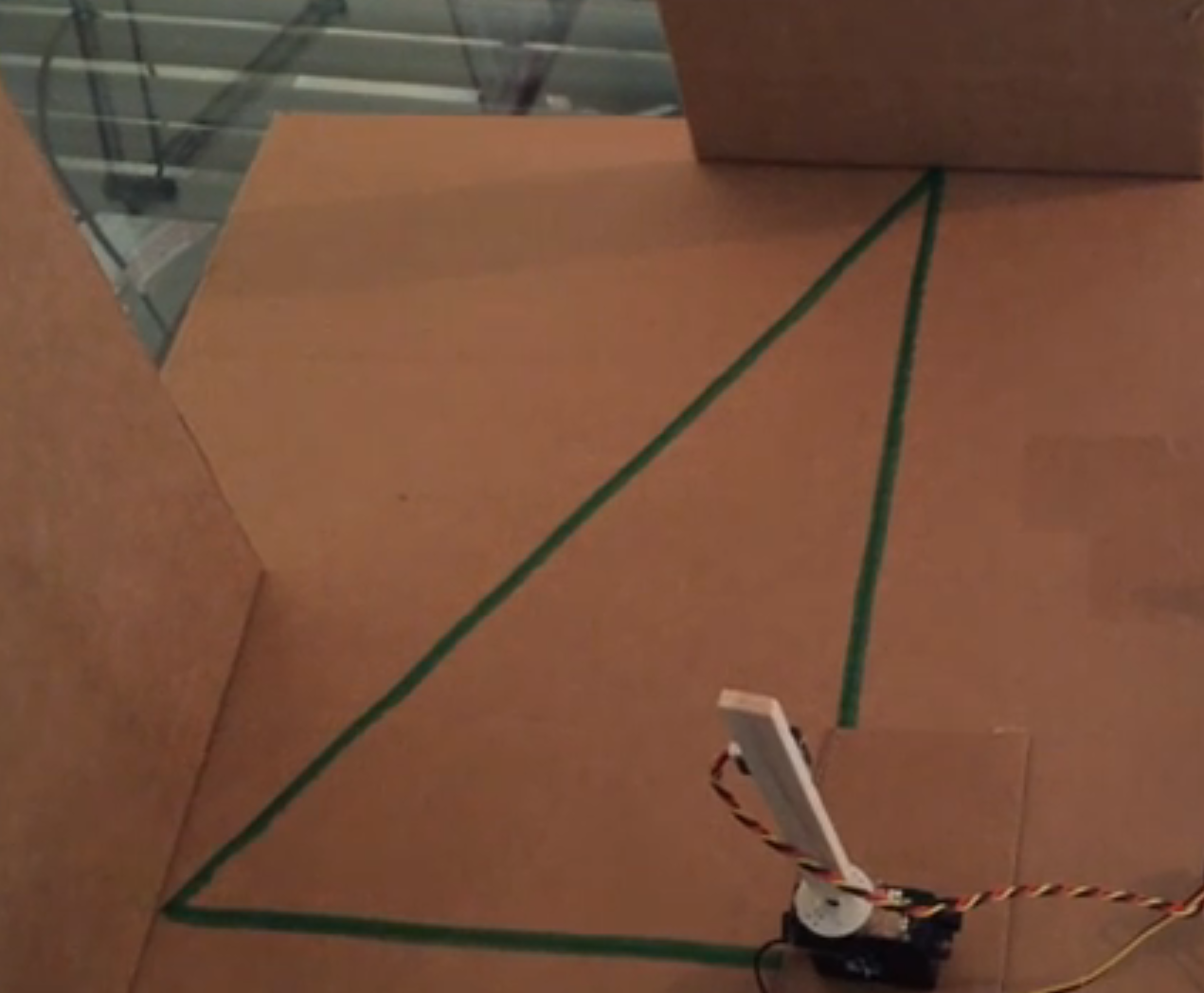Measuring the Hypotenuse
Subjects
Math
Project Type
Real World Models
Required Tutorials
Position servo & Distance sensor
Estimated Time
Medium (3-6 hours)
Description
Use the distance sensors from the Hummingbird Kit to measure the hypotenuse of a triangle.
Free Teacher Materials
Project Map
Learning Goals
Students will use the Hummingbird distance sensor to measure the length of the sides of a hand-drawn triangle. They will then use those measurements to calculate the length of the hypotenuse.
Materials
- Hummingbird Bit Premium Kit
- Cardboard
- Possible Craft supplies
Tips
- Have students work in groups of 2-3.
- Our Printables page has a variety of documents for making teaching and learning with Hummingbird easier. Visit and explore resources like the My First Robot Design Notebook now.
Steps
Robots can use distance sensors to determine where objects or people are in the environment. A stationary distance sensor can only measure the distance to an object right in front of it. On the other hand, a moving distance sensor can measure the distance to a number of objects in the environment. It can even compute the distance between these objects.
In this project, students are challenged to design a system to measure the distance between points A and B using a distance sensor at a third point C. The distances CA and CB can change, but the angle ACB is always a right angle.

The system shown in the video below includes a distance sensor mounted on a servo motor. Cardboard surfaces are placed at A and B. The servo motor rotates the sensor to measure the distance to each cardboard surface. The program then uses the Pythagorean Theorem to compute the distance between A and B. This distance is displayed on the screen. The cardboard surfaces at A and B can be moved to accommodate different lengths for CA and CB.
Standards Alignment
This project requires an understanding of right triangles and the Pythagorean Theorem (Common Core math standard 8.G.B). This project could also be expanded to incorporate trigonometry to calculate the unknown angles (HSG.SRT.C). In addition, this project aligns with the Next Generation Science Standards for engineering (MS-ETS1-1, MS-ETS1-2, MS-ETS1-3, MS-ETS1-4, HS-ETS1-2, and HS-ETS1-3).

